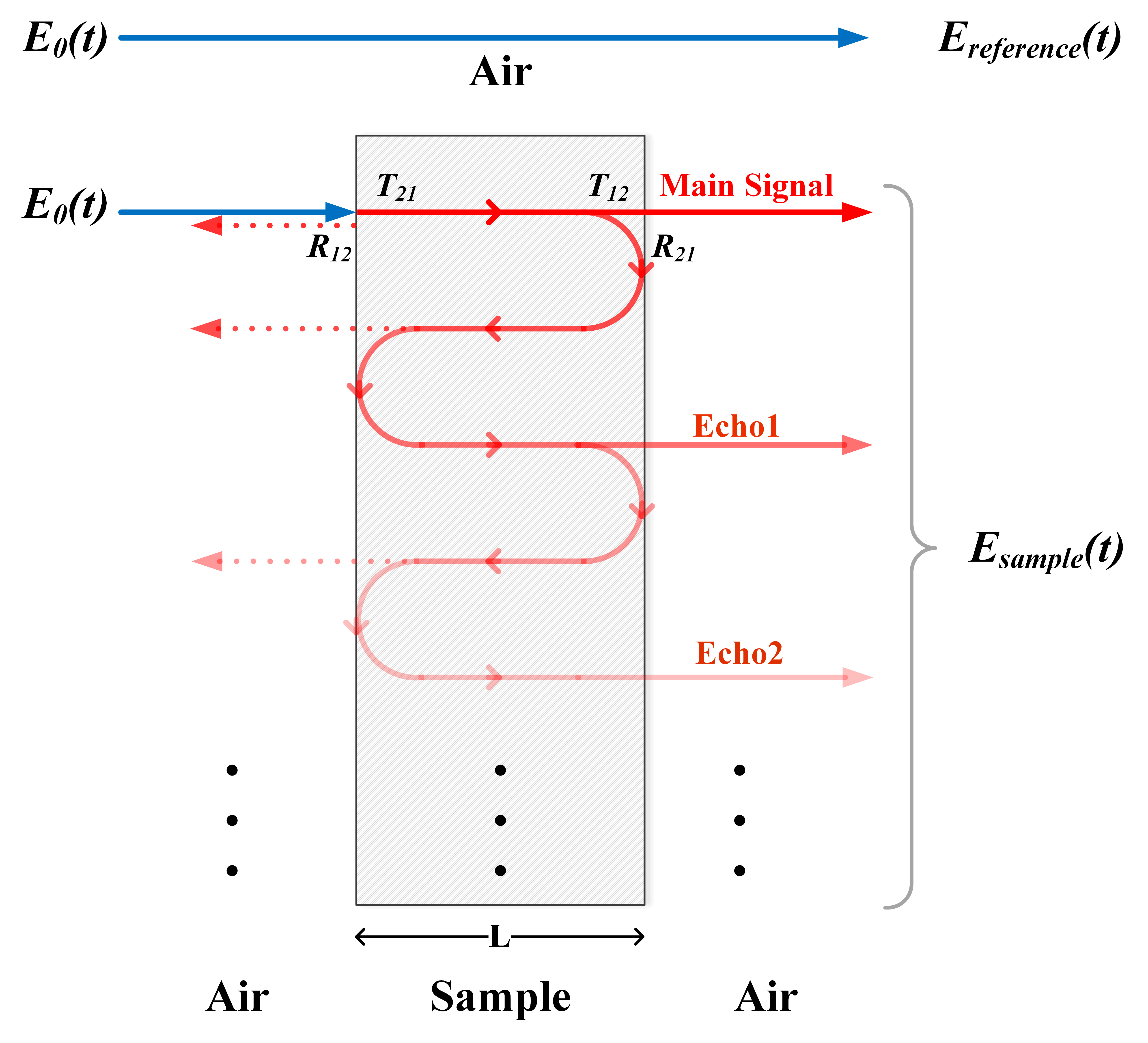
A research team led by Prof. QI Feng from Shenyang Institute of Automation (SIA) of the Chinese Academy of Sciences demonstrated recently a fast and reliable time-domain method for removing Fabry-Perot (FP) effect in material characterization with Terahertz time-domain spectroscopy (THz-TDS).
The study was published in the latest issue of IEEE Transactions on Terahertz Science and Technology.
THz-TDS has been proved to be a powerful tool to extract sample parameters in terahertz region. Certain material parameters, such as the design of electromagnetic devices, measurement of biological material, are needed in many fields. With many molecules having vibration and rotation energy levels in the terahertz region, THz-TDS is widely applied.
The Fabry-Perot (FP) effect caused by multiple reflections within the sample exists inherently in material characterization, which makes the echoes contaminated. In the case of thin samples, the effect can be severe. Different reflection signals may merge together and even the echoes corresponding to the main reflection disappears, making the characterization improper or impossible. In general, Iteration in frequency-domain is the most effective way to extract the material parameter from the signal with the FP effect. But it is time-consuming because of point-by-point computation in frequency-domain.
By optimizing the error function between the measured sample signal and the approximate simulated signal in time-domain, QI and his team at the Terahertz Imaging Laboratory of SIA obtained the sample thickness, and the degree of signal attenuation and distortion, which can be used to recover the echoes caused by FP effect. After the echoes they recover are removed, a clean sample signal without the FP effect is obtained to extract parameters.
Compared with the error of the previous study that only considers signal attenuation in transmission, the error of this method drop dramatically when the distortion of the signal is considered. That means a slight distortion happens in signal, which may be caused by the free space transmission and the material dispersion.
To evaluate the performance of the algorithm, the team test a very thin silicon wafer (~100 μm) whose thickness is less than 2/3 lambda at the central frequency of the THz-TDS system. This indicates that the method can deal with ultra-thin sample. The accuracy of the algorithm is quite comparable to the iterative method, which is considered to be the most accurate one at the moment, but it is more than 100 times faster, with a good convergence performance.
This method provides a new way to solve the FP effect in THz-TDS. The computational complexity of the method is reduced significantly because the removal of the FP effect is completed in time-domain. Hence, it is promising for rapid material scenarios, such as the in-line quality control and imaging-related applications.

Simplified graphic for terahertz transmission through the sample in transmission mode THz-TDS. (Image by QI Feng)

The parameter extraction of the silicaon wafer: (a) the refractive index and (b) the absorption codfficient with and without FP effect. (Image by QI Feng)

86-10-68597521 (day)
86-10-68597289 (night)

52 Sanlihe Rd., Xicheng District,
Beijing, China (100864)

